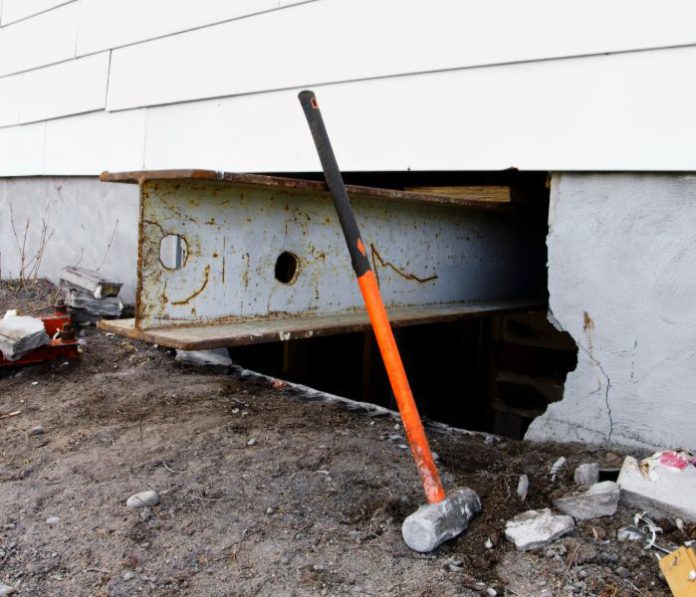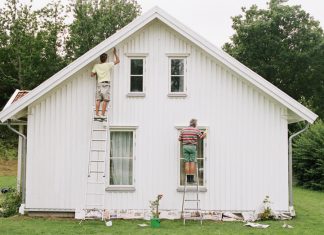Living in Kentucky, you experience all four seasons, from summer heat to snow and ice in the winter. This being the case, most people know what time of the year specific home maintenance needs to be done. Like inspecting your roof during the spring and fall, cleaning out your gutters before winter, and other things to make sure your home is safe. However, most people don’t think about the importance of their foundation and inspect it regularly.
While the weather is beautiful in Kentucky, it can cause issues with your foundation. There are many different ways that these issues can be fixed, and the least expensive ones are the ones caught early. So what are the most popular ways to repair your home’s foundation in Kentucky? Click here to “visit website” for more information on foundation repair methods.
What Are The Main Foundation Types?
How your foundation is repaired depends on a few different factors, such as the type of damage, the type of foundation you have, the kind of soil you have, and other things depending on your situation. There are three main types of foundations Concrete slab, crawl space foundation, and basement foundations.
Concrete Slab Foundation
Concrete slab foundations are the most common because it’s easier to install, and the prep time is quicker. Homeowners like it because it’s low maintenance, and slab foundations are relatively inexpensive. Like all foundation types, the builder should ensure that the ground is slanted correctly and adequate drainage around the foundation.
Crawl Space Foundation
Crawl space foundations are elevated off the ground, and while it’s not as inexpensive and as quick as slab foundations, it’s still faster and less expensive than basements. The benefit of this type of foundation is that if there’s an issue with plumbing, ductwork, wiring, or other issues, they are all accessible under your home. The floors are also warmer since it’s not built on concrete.
Basement Foundation
A basement is at least eight feet deep with concrete flooring. Basements are great for anchoring the foundation and since it extends below the frost line helps the foundation of the home last longer. There are a lot of advantages to basement foundations, such as easy access for repairs, storm protection, and it’s an extension of the living space.
Most Popular Foundation Repair Methods In Kentucky
For years companies have experimented to find the best methods to repair and stabilize foundations. They have used wood, concrete, cement, and steel and poured, pushed, and forced it into the ground to stabilize the foundation. These methods didn’t work well, and companies started trying to figure out ways to stabilize foundations that worked.
Steel Piers
This foundation repair method is considered a permanent solution. This method drives steel piers deep into the soil to stabilize your home’s foundation. Steel is one of the longest-lasting metals and can last up to 150 years. The main reason these are so popular is that they are driven deep into the ground, ensuring your home’s foundation is leveled, and you won’t have to worry about your home sinking. Like all repair methods, there are disadvantages to this method, one of which is the high price of steel makes this repair method costly.
Pressed Concrete Piers
These are solid supports that last for many years. Steel piers and concrete piers are the most used foundation repair methods used in Kentucky because they are suitable for the climate and long-lasting. The piers are specifically made for the type of soil you have. They are roughly 6” round and 8-10” long. They are placed under the foundation and then driven into the ground hydraulically. Concrete piers aren’t as expensive as steel piers making them extremely popular, plus, this repair method can take as little as 1-2 days.
High-Density Polyurethane Foam
This is a quick, inexpensive, and long-lasting method to repair your home’s foundation issues. The contractor will find the weak spots in the foundation, and then foam is injected using a six-foot checkerboard pattern. This repair method is gaining popularity because of how precise it is in fixing the exact area. It doesn’t shrink because it lifts the foundation. Like other methods, there are some issues to be aware of. Since the foam enters holes permanently, you will no longer be able to reach your plumbing as quickly, so before treating, you’ll want to make sure there are no leaks before using this method of repair. HVAC ducts can be clogged during the repair process, and if your foundation problem is severe, it may not work as well as pier supports.
Patches and Sealants
If you have noticed some cracks in the corners of your foundation, professionals can usually repair them with masonry patches and sealants. Cracks in the corners are often a sign of shrinkage and are not a huge issue, but it is essential to seal any cracks in the foundation before further damage is done. The type of sealants and patches most frequently used are:
- Epoxies
- Hydraulic cement
- Vinyl concrete
- Polyurethane
- Silicone
Slab Jacking
Slab jacking is when uneven concrete is jacked up to restore the house’s structure. It does this by filling the space under the slap by drilling 2” holes into the areas. Slab jacking is also known as concrete lifting, mud jacking, slab leveling. This is used for slab foundations as an inexpensive and quick way to level out sinking or shifting foundations. Unlike piering, slab jacking needs to be done every few years. The reason for this is the solution is heavy and causes the soil to compress under the slab.
Helical Piers
These piers are another popular foundation repair. They look like large screws and are used in interior and exterior foundation repairs. Helical piers work well for repairing lightweight concrete slabs and soft soil when other methods don’t work. The piers are screwed into the ground to predetermined load capacity and weight then the structures are transferred onto the piers.
Costs Associated With Foundation Repair Costs
When you first notice cracks or changes in your home’s foundation, one of the first things you probably think about is the cost. And for a good reason. The average cost to repair a foundation is between $2,300 to $6,800, with an average of $4,500. The price depends on a few things, such as the extent of the damage and the repair method. For example, a simple crack repair costs around $200 to $800 per crack, depending on its size.















